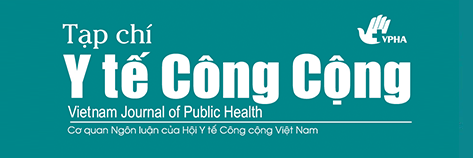Lượng giá nguy cơ thừa cân béo phì liên quan đến tiêu thụ nước ngọt có ga không cồn ở học sinh một số trường trung học phổ thông tại Hà Nội (Overweight and obesity risk assessment related to non-alcoholic carbonated soft drink consumption among high school students in Hanoi)
Tóm tắt
Trên thế giới, nhiều nghiên cứu đã chứng minh có sự liên quan giữa sử dụng quá nhiều đường trong nước ngọt với một số nguy cơ sức khỏe như thừa cân béo phì (TC-BP). Tại Việt Nam, sử dụng nước ngọt có ga không cồn là sự lựa chọn ưa thích của nhiều lứa tuổi trong đó có học sinh. Nghiên cứu trên 620 học sinh THPT tại Hà Nội nhằm lượng giá nguy cơ TC-BP liên quan tới sử dụng nước ngọt có ga không cồn, áp dụng khung lượng giá nguy cơ bán định lượng. Kết quả nghiên cứu cho thấy, tương ứng với mức tiêu dùng nước ngọt có ga của học sinh THPT mô tả trong nghiên cứu thì 3,4% số học sinh tham gia nghiên cứu sẽ có nguy cơ cao, 40,2% sẽ có nguy cơ trung bình và 56,5% sẽ có nguy cơ thấp về TC-BP liên quan tới tiêu dùng nước ngọt có ga không cồn. Tuy nhiên, nghiên cứu này mới chỉ dùng lại ở đánh giá bán định lượng. Do vậy, cần tiếp tục có các nghiên cứu ở qui mô lớn hơn và sâu hơn về lượng tiêu thụ nước ngọt có ga và nguy cơ đối với sức khỏe khi tiêu thụ nước ngọt có ga ở người Việt Nam.
English abstract
A wide body of research worldwide points out the association between soft drink consumption and the risk of overweight and obesity. We conducted a descriptive study on 620 high school students in Hanoi in 2015 to identify the risk of overweight and obesity associated with soft drink consumption. We applied a semi-quantitative risk assessment framework to assess the risk of overweight and obesity due to soft drink consumption. In line with the soft drink behavior consumption and nutritional status, 3.4% of students taking part in the study faced a high risk of overweight and obesity while 40.2% and 56.4% had medium and low risk of developing such conditions, respectively.Từ khóa
Toàn văn:
PDF (English)##submission.citations##
Viện Dinh dưỡng (2009), Tài liệu hướng dẫn tổng điều tra dinh dưỡng Quốc gia, Hà Nội.
http://viendinhduong.vn/home/vi/25/Download.aspx
Susan H Babey et al. (2009), Bubbling over: soda consumption and its link to obesity in California , Policy Brief UCLA Cent Health Policy Research(5), p. 1-8.
Sa'eed Bawa (2005), The role of the consumption of beverages in the obesity epidemic, The journal of the Royal Society for the Promotion of Health. 125(3), p. 124-128.
Richard A. Forshee, Patricia A. Anderson and Maureen L. Storey (2008), Sugar-sweetened beverages and body mass index in children and adolescents: a meta-analysis, The American Journal of Clinical Nutrition. 87(6), p. 1662-1671.
Sigrid Gibson (2008), Sugar-sweetened soft drinks and obesity: a systematic review of the evidence from observational studies and interventions, Nutrition Research Reviews 21(2), p. 134-147.
E. Denova Gutiérrez et al. (2008), Association between sweetened beverage consumption and body mass index, proportion of body fat and body fat distribution in Mexican adolescents, Annals of Nutrition and Metabolism. 53(3-4), p. 245-251.
Frank B. Hu and Vasanti S Malik (2010), Sugar-sweetened beverages and risk of obesity and type 2 diabetes: epidemiologic evidence, Physiology & Behavior - Journal. 100(1), p. 47-54.
Intenation Standard Oganization (2009), AS/NZS ISO 31000:2009 Risk Management – Principles and Guidelines.
University of Texas Health Science Center at San Antonio (2011), Waistlines in people, glucose levels in mice hint at sweeteners' effects: Related studies point to the illusion of the artificial. http://www.sciencedaily.com/releases/2011/06/110627183944.htm
W&S market research (2013), Soft drink behavior consumption of Vietnamese.
WHO (2016), Sanitation safety planning: manual for safe use and disposal of wastewater, graywater and excreta, Geneva: World Health Organization, p. 51-55
http://apps.who.int/iris/bitstream/10665/171753/1/9789241549240_eng.pdf
WHO (2015), Child growth standards.
http://www.who.int/childgrowth/standards/b_f_a_tables_z_boys/en/
WHO, FAO (2009), Microbial Risk Assessment series No 17, Risk characterization of microbiological hazards in food, p. 37-50.
http://www.fao.org/docrep/012/i1134e/i1134e.pdf



